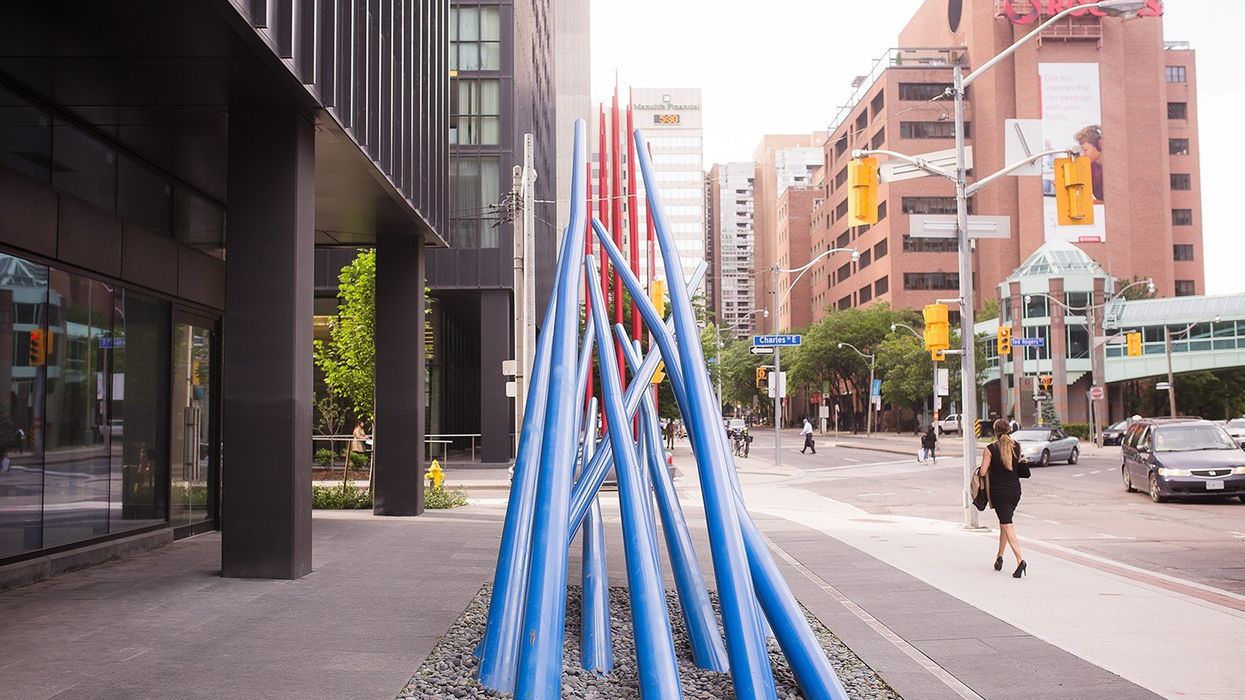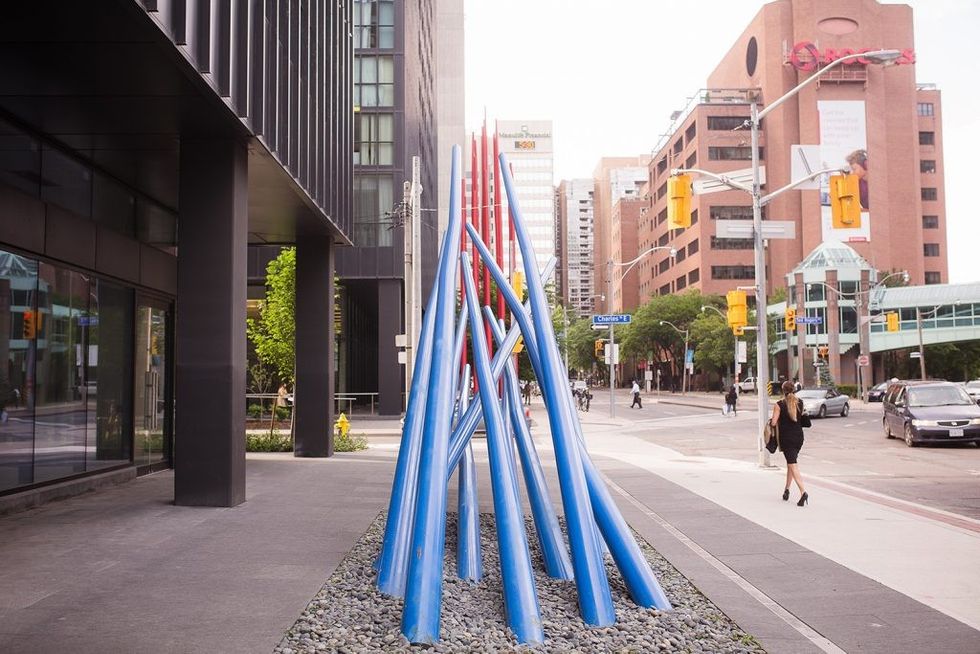
Back when Shayne Dark started out as a sculptor, it was a real struggle trying to take his art to the next level.
“My wife was really supportive during those lean years,” says the Kingston, Ontario native. “I had a small art practice. We would show in museums and commercial galleries and we would get the odd building lobby. Maybe we'd do a relief or do a sculpture for someone who was interested in the arts and didn't mind spending the money.”
Financial investment is a huge factor for anyone who makes their living as a sculptor. Dark says it costs literally tens of thousands of dollars to manufacture the materials necessary to make those big public art projects you might see as part of a condominium development.
“Those jobs in Canada are few and far between. But luckily, what ended up happening in a few major Canadian cities was this one per cent rule where if you were a developer working on a public building, a portion of the construction costs would actually go to art,” says Dark.
Dark's Public Portfolio
Thanks in part to these programs, Dark's monumental public sculptures permeate cities across North America. Though not initiated through the city's own program, his three sculptures that dot Toronto's landscape were no doubt catalyzed by an acceptance of public art in the city that the program helped foster. The first is Double Vision. Located on the northwest corner of Jarvis and Charles streets in front of X the Condominium at 558 Jarvis St., these huge red poles jutting out of the sidewalk bring to mind bamboo shoots.
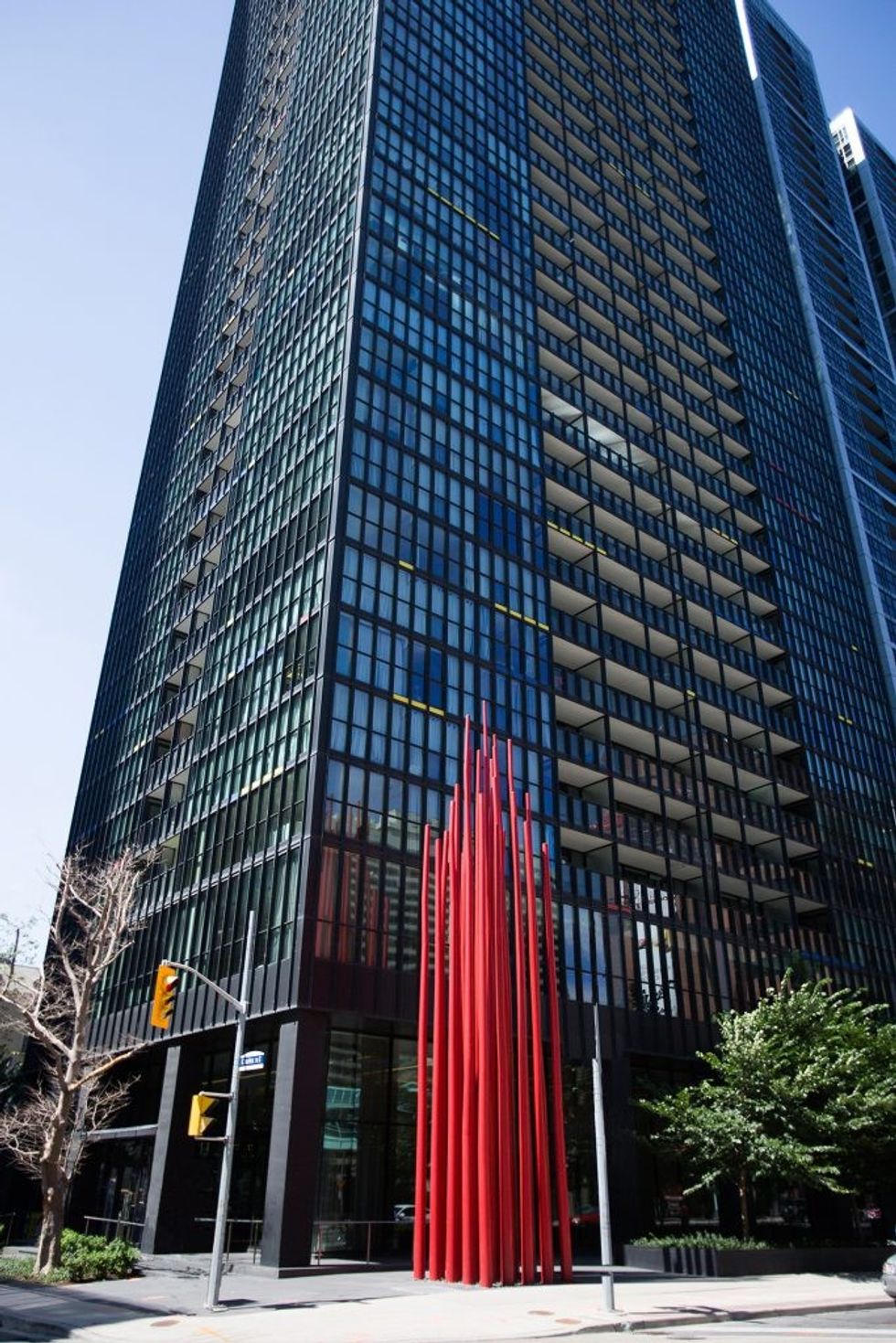
Just across the street, at 101 Charles St. E, in front of The X's younger sister building X2, sits Double Take, which is characterized by the same monumental poles, but this time they are slightly slanted toward Double Vision as if the two pieces are communicating.
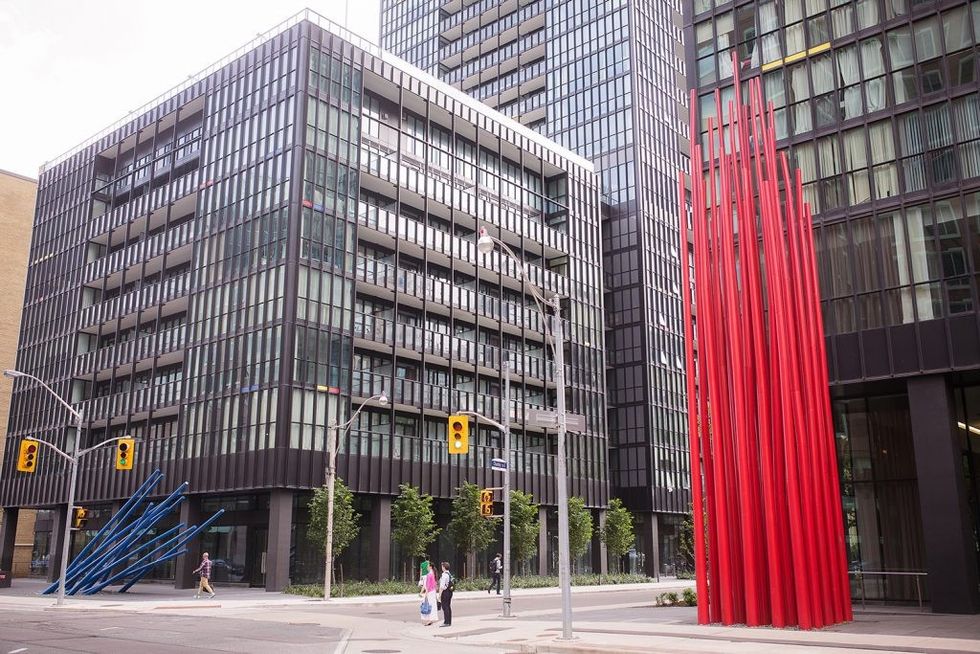
“That's an interesting project because there's a dialogue between the two pieces across the road from one another. You've got the red vertical sticks, then you've got the blue horizontal ones and it sets up a dynamic and creates a threshold. They are engaging both in their own right and also with one another. They engage in an interesting artistic and architectural discussion,” says Brad Golden, a Toronto public art consultant whose job it is to partner with developers and organizations to help them figure out what kind of art would work for their space.
More abstract than Double Vision and Double Take is Dark's latest public artwork in Toronto, Nova, which actually pierces through the podium table of the Tableau Condominium at 125 Peter Street and is completely incorporated into the structure of the building.
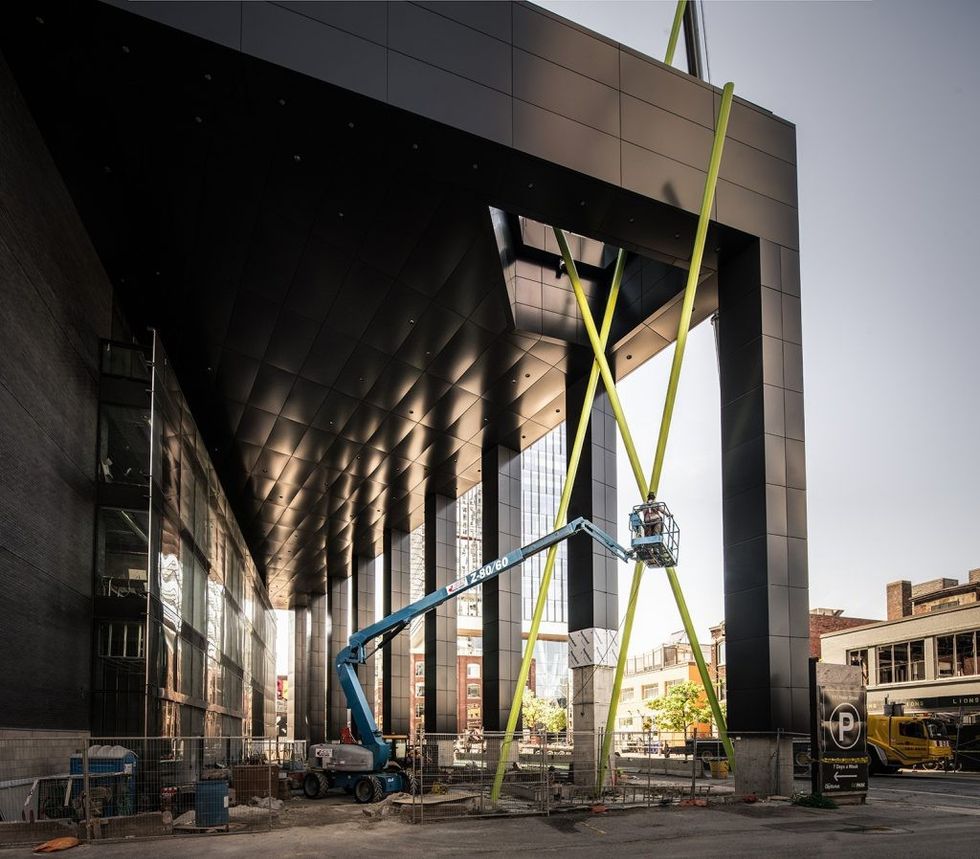
“Shayne's work is monumental and bold. It has a strong, simple message, so with modern real estate I think it's a good compliment. In our case, it was integrated into the building and together with his similar pieces at X and X2, I think they all work together throughout the city to make an impactful statement. Our buildings have that bold look and we like that compliment,” says David Wex, co-founder of Urban Capital, one of Toronto's most prolific developers and one of three responsible for Tableau.
Bold and engaging not only describe Dark's work, but very often also the Canadian landscape and natural world that inspires him. Dark has lived in the heart of Ontario's cottage country at the edge of the geological wonder of the Canadian shield for 35 years. He is surrounded by nature every day and often tries to replicate the natural patterns he sees in the forest in his art.
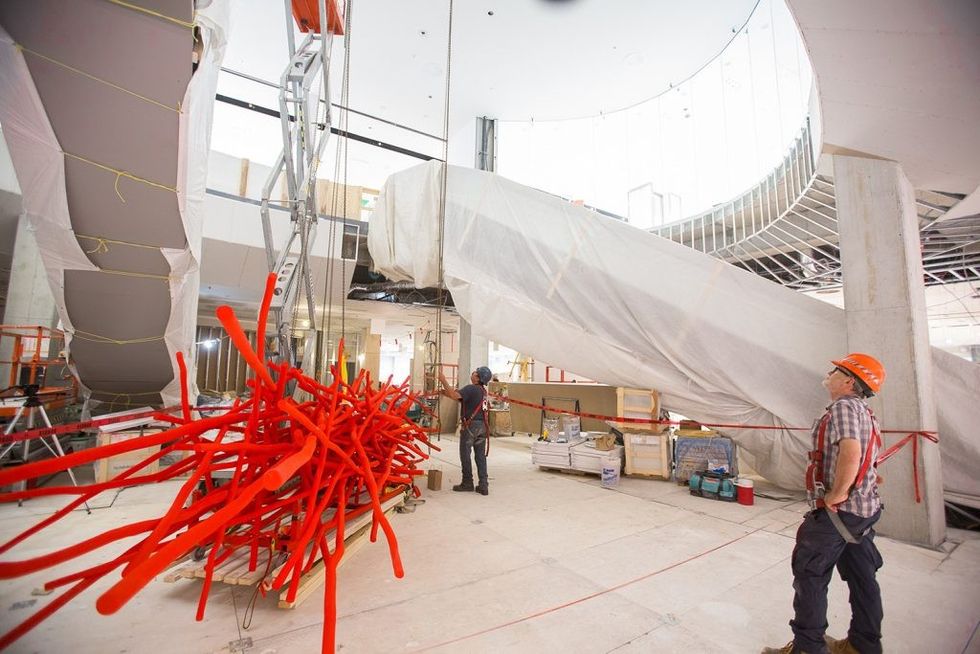
“Initially, we'd walk in the forest or along the lakeshore and I'd find these interesting found objects, like a big pile of sticks and pieces of driftwood, and these became my art practice,” says Dark. “I think for any artist, where you live is so important. Being Canadian at this point in history, on this day, in this time is an experience and feeling I want to document. I feel where you're from can not help but influence every artist's practice to some degree.”
Toronto's Impact on the Public Realm
Just as Dark wants his art to have a strong sense of place, the city of Toronto wants to share its own character with the world through its Percent for Public Art Program.
“This program was set up to improve the public realm in the way that art can add character to the street, to a building face or to a park. We're happy that artists benefit from this program, but it's more to benefit the people that live and work in the city,” says Jane Perdue, public art coordinator for the city of Toronto.
The program began in 1985 and was influenced by U.S. cities that already believed public art was a necessary extension of city planning, such as New York, Chicago and Philadelphia. Amalgamation of the city in 1998 simply expanded the program.
Perdue and the rest of City Planning oversee private developer commissions like the ones found on condo property, while Arts and Culture oversees public art on public land.
Under Section 37 of Ontario's Planning Act, developers are allowed to have taller buildings or more units and other such concessions in exchange for putting a minimum of one per cent of the project's construction costs toward public art. The art can either be on-site, on city property nearby, or a combination of both. The guidelines set out by the program ensure that the art is of public benefit and is also visible, accessible and adds to the urban character of the city in a positive way.
If a developer pursues public art for their building, they must submit their plan to City Planning and the Toronto Public Art Commission who then put it to Toronto's City Council for a vote. Once the project is approved, artists with a proven track record are put forward and selected by a five-person jury made up of fellow artists, the developer and a citizen from the community.
“The way they jury it is fantastic because it's done by your peers and it's as fair as it possibly can be, especially for contemporary art, which always takes a while for people to come around to. But now programs like this are getting people used to seeing public art and they're really enjoying the dialogue it creates. It has become a reference point in different parts of the city where suddenly art is coming into people's lives every day,” says Dark.
Developers are fond of the process too. Though he hasn't personally sat on the jury, Jim Ritchie, Tridel's senior vice-president of sales and marketing, has discussed proposals internally and there are many things he is often looking for.
“There's no simple answer because every building is different, but we have to consider, where can this art go and how will it be seen, while keeping in mind the immediate surroundings of the artwork's potential location. We try to get away from personal preference and we work with art consultants to help guide us, but there's always a different solution depending on the community we're building,” says Ritchie.
Public art doesn't just enhance the community, it can also enhance a developer's bottom line by attracting new buyers and renters to the building.
“I don't know if they would pay more, but it certainly helps to convey a strong brand, it gives a strong message and, in the case of Tableau, it was incorporated into the whole conception of the building and is a big part of its identity,” says Wex.
Public Art is now a part of Dark's identity too. As people get to know him and see these massive sculptures as his artistic calling card, he's receiving even more opportunities to put his personal stamp on the world.
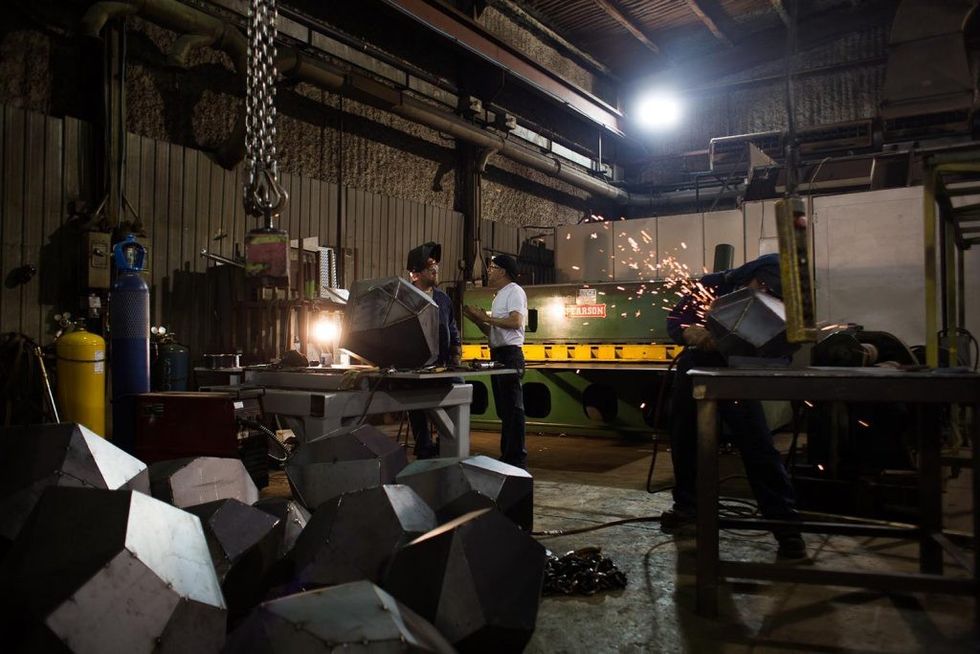
“Work begets more work,” he says. “Now I'm getting private work for people wanting something for their estate somewhere because people happened to walk by while we were working on a piece. Canada is just a sliver of the art world, but these programs have allowed me to reach a wider audience. I'm doing work in Europe and San Francisco now. Programs like this confirm that it's possible to be a full-time artist and they allow us to play at a level that the vast majority of us would never otherwise get to.”
